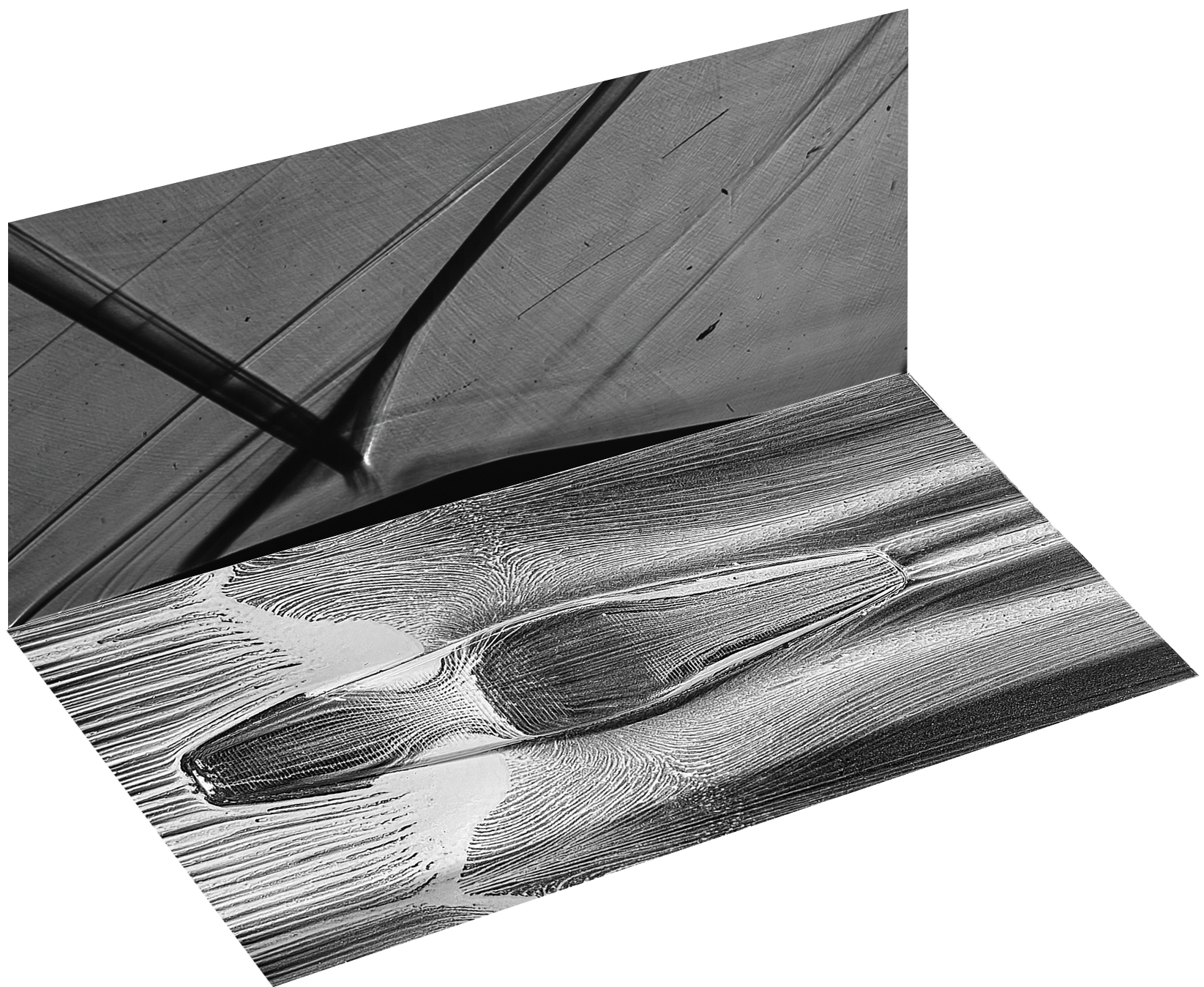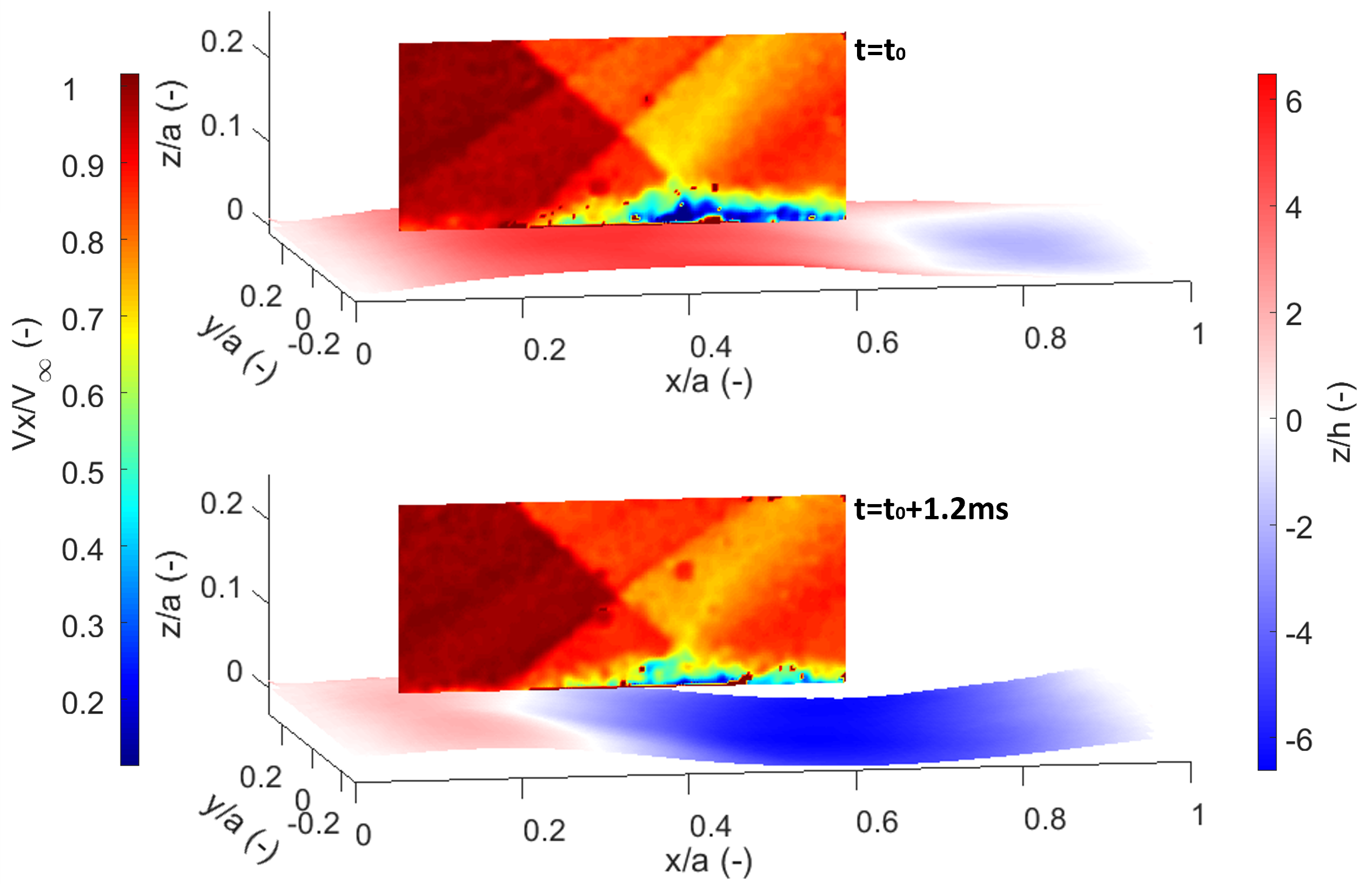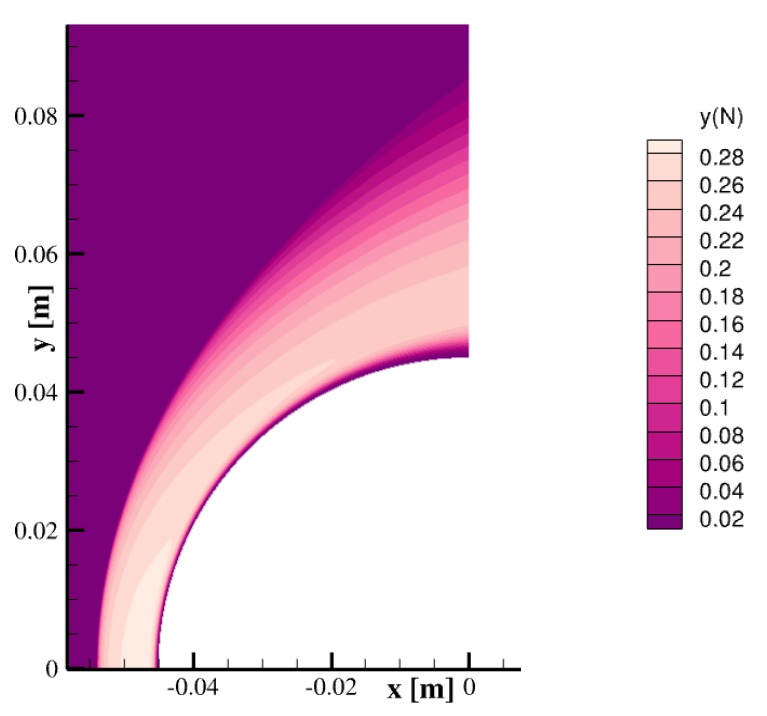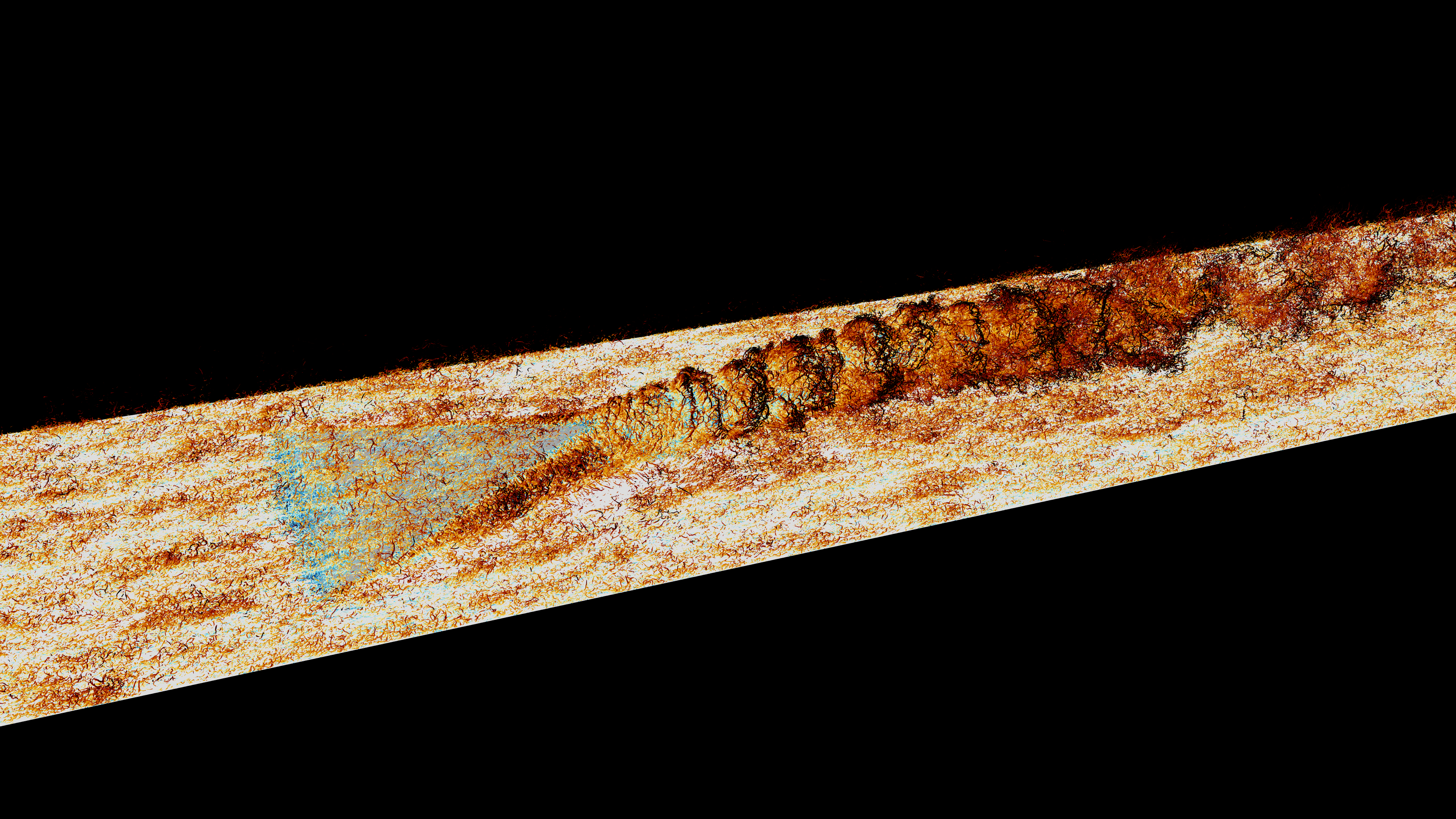High Speed Aerodynamics
At high speeds, of the order of the local speed of sound, air is subject to compressibility effects and may undergo substantial changes in density besides pressure and velocity. These changes can be abrupt, as in the case of shock waves, and may potentially lead to flow separation and large-scale unsteadiness. Structural components are at risk of damage under such critical flow conditions, since they can resonate and endure vibrational fatigue. In the hypersonic regime, thermal loads become an additional concern due to the extreme aerodynamic heating, thereby posing stringent requirements on the material selection and thermal protection system. Improving our understanding of such complex high-speed flows and the associated fluid-structure interactions (FSI) is thus crucial for damage mitigation and improved system performance. Examples of high-speed flight systems include air-breathing engines, control surfaces, rocket nozzles and planetary re-entry capsules.
In our group, we actively investigate high-speed flows and related phenomena with high-fidelity simulations (DNS/LES coupled with structural solvers) and state-of-the-art experimental techniques (particle image velocimetry, schlieren/focusing schlieren, digital-image correlation) employed in our high-speed wind tunnel facilities. Our goal is to produce comprehensive high-fidelity datasets that enable us to map and scrutinize the fundamental physics involved. The acquired knowledge is then used for design optimization and efficient flow control approaches.
In the following, ongoing research projects are briefly outlined. For additional information or possible collaborations, please contact us.
Current research projects
Transonic buffet
The flight envelope of an aircraft operating at high subsonic velocities is bounded by several limitations, one of these consists in the wing experiencing oscillations of a shockwave on its suction side for a certain range of Mach number, angle of attack and Reynolds number. This phenomenon is referred to as transonic buffet and it may ultimately result in violent structural oscillations of the wing (the so-called buffeting) in addition to the oscillations of the aerodynamics loads. In this project, the physics of transonic buffet is scrutinized for both supercritical airfoils and swept wings, while also investigating control systems to limit the occurrence of this phenomenon.
Shock-wave/turbulent boundary-layer interactions
Interactions between shock waves and turbulent boundary layers (STBLI) are ubiquitous in high-speed systems. When substantial flow separation occurs, STBLI are known to be highly dynamic and complex and have critical effects on aerodynamic efficiency and system lifetime. The goal of this project is to advance our fundamental understanding of this complex flow phenomenon and to assess the efficacy of novel flow control techniques (such as shock control bumps and heterogeneous roughness) in mitigating its undesirable effects.
Fluid-structure interactions
Dynamic interactions of shock waves with turbulent boundary layers and light-weight elastic structures may jeopardize the integrity of critical vehicle components. This is the case for large area ratio nozzles operating at sea level conditions, where complex shock patterns in the propulsive flow path lead to intermittent and asymmetric aerothermal loads that may trigger resonant modes of the thin-walled nozzle. Other examples include the aeroelastic response of skin-panels and control surfaces to the external airflow, which can lead to a rapid structural degradation and eventual failure by high-cycle fatigue. With this project, we aim to better understand relevant fluid-structure interactions in high-speed platforms so as to increase the overall system performance while reducing structural margins.
Launcher aerodynamics
During the ascent of a launch vehicle, its nozzle and other structures near the base are subject to severe mechanical and thermal loads. The relatively low pressure in the base region contributes significantly to the overall drag of the vehicle. In addition, the large-scale unsteadiness of the flow gives rise to fluctuating pressure-induced side loads on the launcher, which during transonic flight, may excite a structural response (buffeting). Furthermore, the entrainment of hot exhaust gasses in the recirculation region may lead to significant heat loads. In this project an unsteady quantification of the pressure and heat loads is carried out to ensure the safe and efficient design of future launch vehicles. Additionally, launcher geometry variations are investigated with the purpose of reducing these detrimental unsteady effects.
Hypersonic flows
During atmospheric entry, the environment around capsules or space debris is characterized by complex fluid thermochemistry and gas-surface interactions. Numerical simulations are crucial in the understanding of these extreme flow conditions. A promising approach for these challenging simulations is the use of immersed boundary methods (IBM) and adaptive mesh refinement (AMR) techniques, which offer reliable and efficient mesh generation and adaptation with minimal user intervention. Current research activities are focused on the development of such a numerical solver to analyse the influence of these phenomena on the aerothermodynamics of re-entry spacecraft.
Turbulent boundary layers over non-smooth surfaces
The flow physics of compressible turbulent boundary layers is an active topic of research in the community; however, less is known about the interaction with rough surfaces, or control devices. For this reason, we study the behaviour of compressible turbulent boundary layers over non-smooth surfaces. These include acoustic liners (a particular kind of porous surface used to reduce noise on aircraft engines), distributed surface roughness in supersonic flows (representative of ablative shields in re-entry vehicles) and microramps (employed as passive flow control devices).
Involved PhD Candidates, Researchers and Post-Docs

H. (Haris) Shahzad
PhD Candidate
✉ H.Shahzad@tudelft.nl

J. (Jane) Bulut
PhD Candidate
✉ J.Bulut@tudelft.nl

W. (Wencan) Wu
PhD Candidate
✉ W.Wu-3@tudelft.nl

A.O. (Ata) Başkaya
PhD Candidate
✉ A.O.Baskaya@tudelft.nl

L. (Luis) Laguarda Sanchez, MSc
Researcher
✉ L.LaguardaSanchez
@tudelft.nl

Ir. A. (Alessandro) D'Aguanno
Postdoc
✉ A.DAguanno@tudelft.nl
Involved Professors

Dr.ir. F.F.J. (Ferry) Schrijer
Assistant Professor
✉ F.F.J.Schrijer
@tudelft.nl

Dr.ir. B.W. (Bas) van Oudheusden
Associate Professor
✉ B.W.vanOudheusden
@tudelft.nl

Dr. D. (Davide) Modesti
Assistant Professor
✉ D.Modesti@tudelft.nl

Dr.ir. W.J. (Woutijn) Baars
Assistant Professor
✉ W.J.Baars@tudelft.nl








